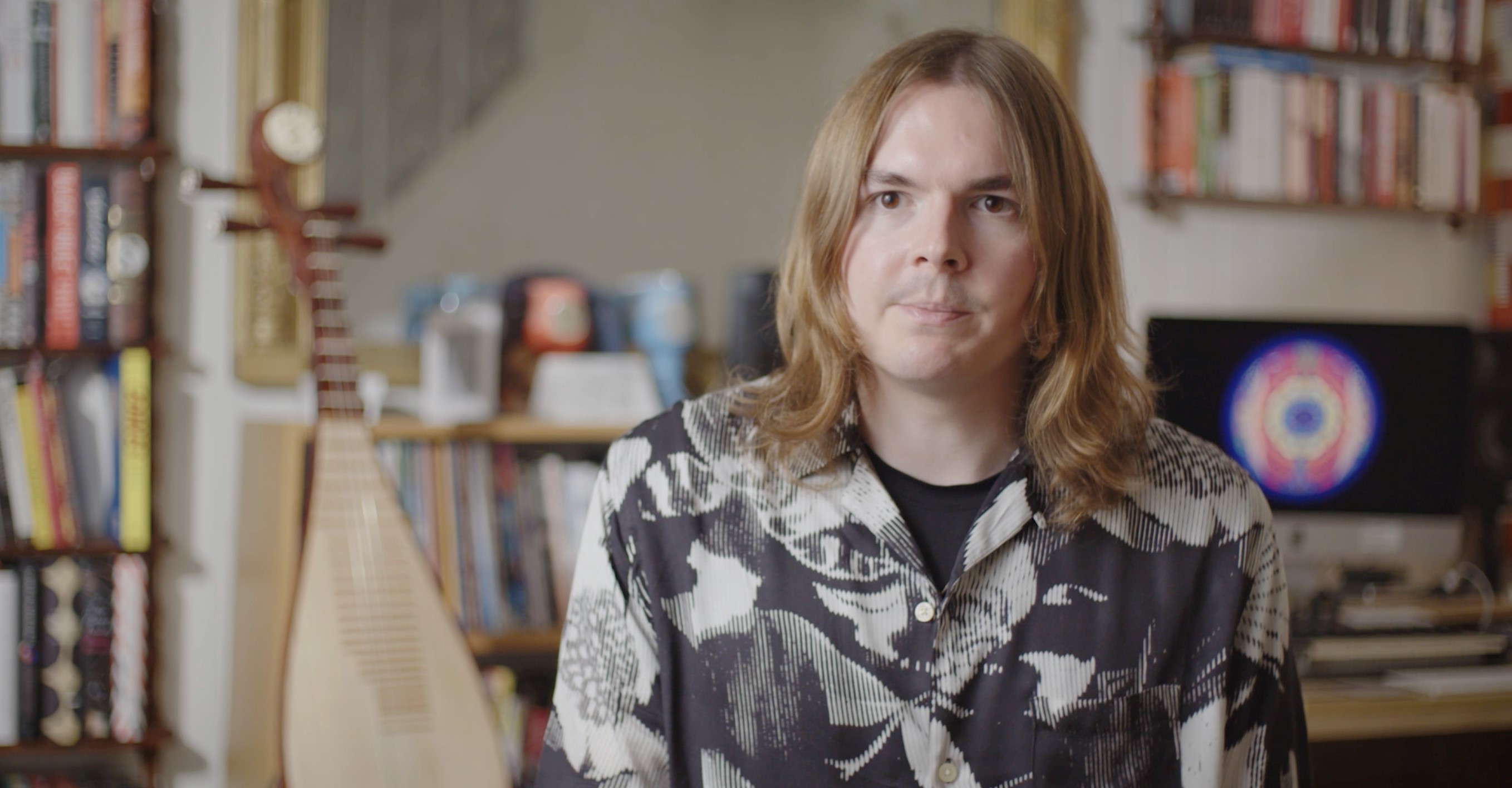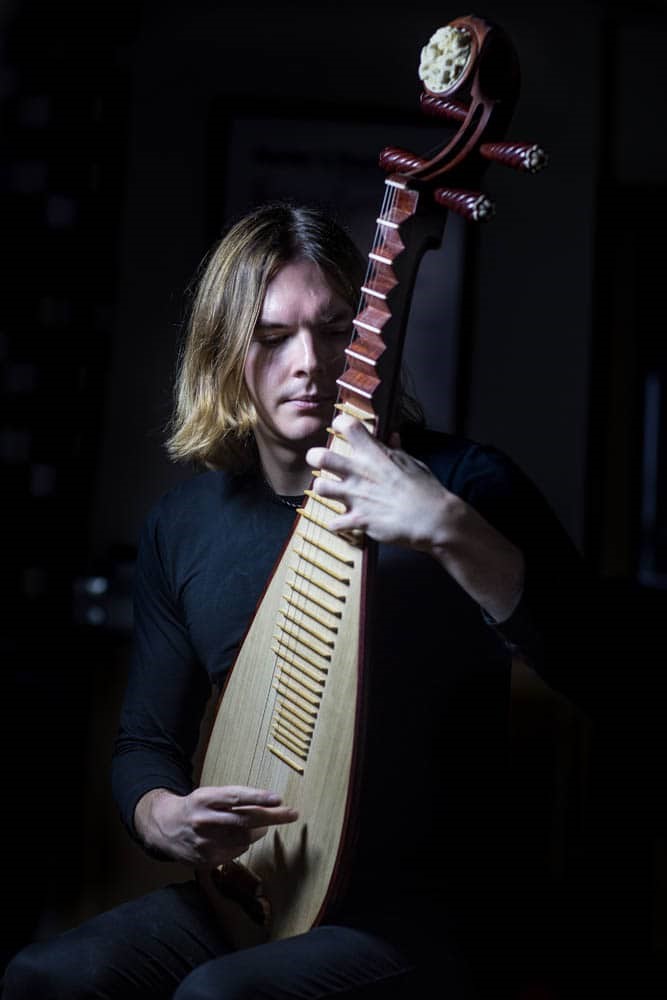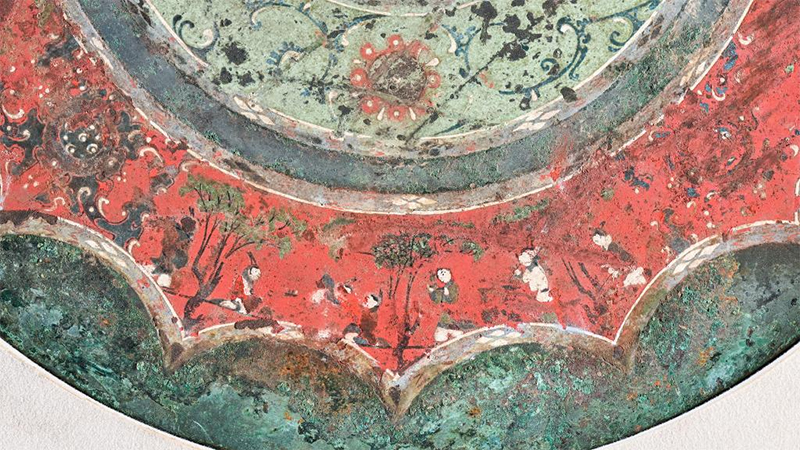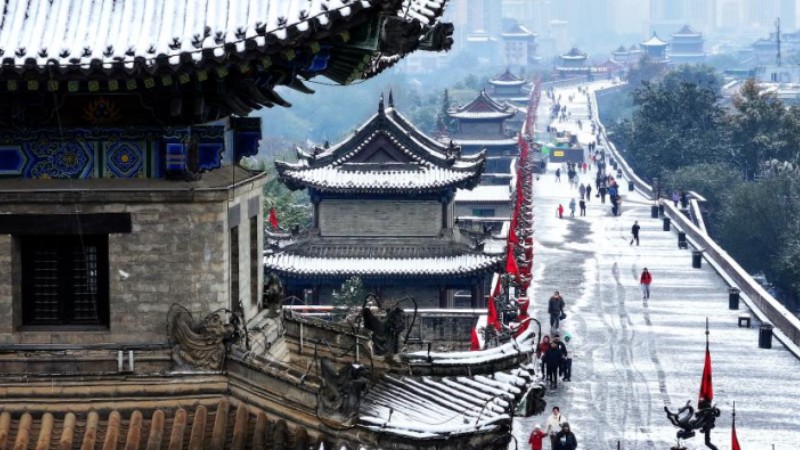Charlie Cawood: Music is a shared language between cultures
With graceful finesse, his right hand gently plucks the strings of the Pipa, while his left hand effortlessly blends the notes. In a poised and elegant posture, he presents a mesmerizing rendition of the “Dance of Yi Tribe,” a renowned masterpiece in the realm of classical Chinese music.

Charlie Cawood (Photo/Patrick Shead-Simmonds)
Behind this captivating performance is the distinguished young London musician, Charlie Cawood. His musical journey commenced when he was 11 learning to play classical guitar. Along the way, he was introduced to other forms of non-Western music. At the age of 17, he started learning how to play the Pipa and later completed a master’s degree in East Asian music at SOAS. For Cawood, engaging with music from diverse cultures not only informs his artistry, but also broadens his global perspective.
Cawood eagerly anticipates a collaboration with Beibei Wang in Shanghai this year, contributing his talents to her new composition, “Wu Xing.” He hopes to foster more collaborations with Chinese musicians and further explore the rich tapestry of classical Chinese music in the years to come.
Mastering classical Chinese music

Charlie Cawood playing the Pipa (Photo/Ashley Jones)
Cawood plays over 20 musical instruments including five in terms of Chinese instruments. The main instrument he plays is the Pipa, the most famous Chinese lute. He also plays the Ruan, specifically the Zhong Ruan and Da Ruan. The Ruan has a round body just like the Chinese moon, and is even older than the Pipa that dates back to the Tang Dynasty. Aside from these Chinese instruments, Cawood also plays the Liu Qin and Gu Zheng.
Cawood’s discovery of Chinese music goes back to his mid-teens. He was struck by the depth of melodies in Chinese music. One of the first Chinese musical pieces that he fell in love with was called the “Dance of Yi Tribe,” which is on the first Pipa album that he owned. The song has a very striking and infectious melody, and was based on ritual practices of the Yi people in southern China. Since learning how to play the Pipa at 17, Cawood has played the song in various arrangements. Cawood was taught by Cheng Yu, the leader of the UK Chinese Ensemble at SOAS when he specialized in East Asian music.
Cawood said that when he first started studying the Pipa, he assumed that his guitar skills would be transferable to the Pipa. However, in many ways, the techniques are completely opposite each other. Instead of the flesh of your fingers going into the string, when you play the Pipa, your nails go outwards. Some of the Pipa techniques are unique, like the five finger tremolo. The Pipa can express and articulate in so many different ways, being a musically rich instrument.
“What attracts me to classical Chinese music the most is the calligraphic nature of the melody.” Cawood describes Chinese music as very similar to calligraphy because of the musicians’ approach to the notes. In a Western interpretation, the musician will play the notes, including the ornaments and the decorations, exactly as the composer had written for them. However, when you hear Chinese music played by a Chinese musician, one would articulate the notes in their own way. Cawood explained that on the Pipa you use blending or tremolo, and you will add different textures and expressions based on what your instrument can do. This can lead to a lot of emotional depth in melodies, rather than just being a series of notes.
The first music album “The Divine Abstract”
Cawood wanted to combine musical traditions from different places and cultures, as well as create a vocabulary that is personal through his music. So, his music could reach any listener, no matter their background. He said music is such an infinite thing, particularly when one comes from London. Every type of music is available, and that brings people together. “Music becomes a multitude of shared languages that people use to communicate with each another.”
Cawood’s vision of music can be clearly seen from his debut solo album, “The Divine Abstract,” which was composed when he was studying the musical traditions of East Asia at SOAS. In these compositions he combined his love for traditional and classical Chinese music with inspirations from Western chamber music. The piece that is most influenced by classical Chinese music is called “Earth Dragon.” It consists of three sections: the “Golden Flower,” an “Invisible Landscape” and “The Origin of a New Being.”
On the album, Cawood collaborated with many Chinese musicians. For example, in “Earth Dragon,” he played the Pipa parts himself. The piece also features the brilliant Xiao player, Dennis Li, and Erhu player Wang Xiao. Cawood gave them the basic notation but allowed the Chinese musicians to interpret the notes their way and add their own interpretations to the melodies. For example, the Erhu needs to achieve very vocal articulation, so Dennis Li added breathy expressions to decorate the melody.
Cawood was very proud of the music in “The Divine Abstract.” The “32nd Path,” which follows the “Earth Dragon,” is a song that he particularly enjoys. It is a combination of some Chinese influences. The main theme is played on a Pipa. However, the song’s structure is heavily influenced by Indonesian gamelan. Cawood said the album was universally and critically acclaimed and listeners appreciated the different influences of music as well as the production and the musicianship.
Collaborations with Chinese artists

Charlie Cawood performing with Beibei Wang
Cawood has been working with the well-known Chinese multi-percussionist, Beibei Wang, for a number of years. They first played together at Hackney Empire on a song that combined Chinese and Western influences. One of the songs that they collaborated on is called “Battle,” which is an adaptation of a traditional Pipa song called “Ambushed on Ten Sides,” depicting an ancient battle between two opposing armies. Cawood and Beibei Wang gave the song a semi-theatrical interpretation, and the performances were improvised. They approach the piece slightly differently every time. Cawood has been asked by Beibei Wang to participate in her new composition “Wu Xing,” which is based on the five Chinese elements. The song premiered at Ellis St Luke’s in London, and Cawood looks forward to performing the piece in Shanghai in November this year.
Cawood also discussed the differences between playing in Chinese and Western ensembles. While Chinese ensembles will sometimes use Western notations, most of the time they use number notations. Perhaps it is because there is less written music when playing a Chinese ensemble. There will be a core melody and different instrumentalists will interpret the melody their own way, which is called Heterophony in musical terms. It is not completely fixed as it is in a classical Western ensemble.
As a Western musician, Cawood finds it very important to try and immerse oneself in music from other cultures, because no matter what your background is, you can always become limited by the style you are familiar with. “I think as musicians, it is very important for us to study music that takes us out of that world and expands our vocabulary, which will introduce us to new concepts. Through this process, we can find universal and similar things, but also concepts that are completely different. This makes us a lot more three dimensional, and very important in today’s culture.” Cawood said that exploring different types of music will not only allow people to learn the music, but also the history and cultural context, fostering more cultural exchanges between East and West.
Photos
Related Stories
- Feature: Erhu virtuoso showcases Chinese culture, music charm at UN
- China-CEEC music forum promotes int'l art collaboration
- In pics: pottery Xuns made of materials sourced from Yellow River
- Music connects generations
- China, Austria strengthen mutual bond through music
- Indonesian teacher promotes Gamelan in S China's Guangxi
- China Now Music Festival ends with tribute to three generations of composers bridging U.S., China
Copyright © 2023 People's Daily Online. All Rights Reserved.









